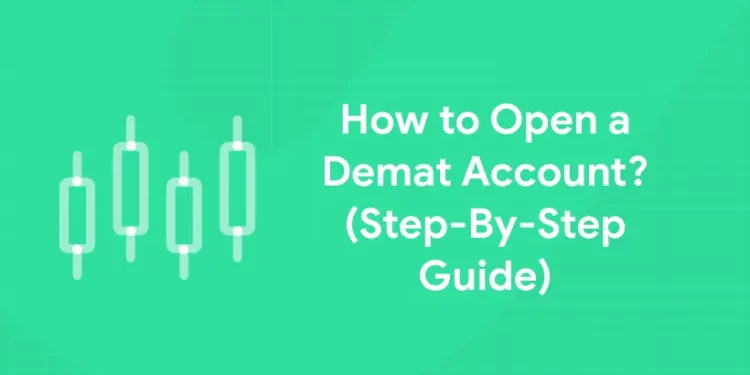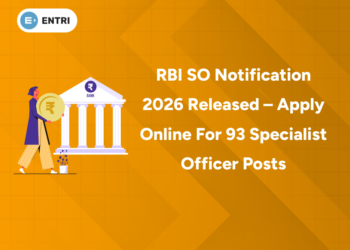Table of Contents
These days, there are a wide variety of account types available, including savings, fixed, NRI, and Demat accounts. However, what exactly is a Demat Account? Only 3% of India’s population participates in the world’s best-performing stock market. You need a Demat account to begin trading, and it’s easier than you might think. Opening a Demat account for trading shares is simple and takes only a few steps. But the important question is: How to Open a Demat Account?”
How to Open a Demat Account: Introduction
Dematerialization is the process of converting an investor’s physical shared certificates into an electronic format. Following that, shares are kept in an account known as the Demat Account. An investor can streamline transactions and maintain all of his government securities, mutual funds, shares, bonds, and other assets in one place by using a Demat Account. Thus, the subject of how to open a Demat Account becomes significant to any potential investor.
What Is a Demat Account?
1: What is a stock?
The term “demat” refers to the process of converting physical securities into an electronic format, which simplifies the holding, transferring, and trading of securities. A Demat Account, which stands for a dematerialized account, is a game changer for investors. With a Demat Account, you can hold a variety of securities in electronic form, such as bonds, IPOs, government securities, mutual funds, and exchange-traded funds (ETFs). A person’s holdings in bonds, mutual funds, exchange-traded funds, equities, and government securities are combined into a single Demat Account. To trade online, an investor needs to open a Demat account with a Depository Participant (DP).
If you want to learn more of the basics of the stock market then it is better to join an online course that is taught by excellent teachers and teaches trading from scratch. Entri provides one of the best stock market courses available on the internet at present. They provide benefits like expert mentors, practical trading assistance, live session certifications etc.
Authority Institutions for Demat Accounts
Central Depository Services Limited (CDSL) and National Securities Depository Limited (NSDL) are the two depositories registered with SEBI. Any Depository Participant (DP), who works as an intermediary or agent for a shareholder, must be registered with one of these two regulated operators to offer depository services. Thus, we may state that NSDL (National Securities Depository Limited) and CDSL (Central Depository Services Limited) are responsible for maintaining the Demat account.
A distinct 16-digit client ID is included with every Demat account number. The Demat account number for CDSL should be 0000000000000000, whereas the Demat account number for NSDL should be IN000000 00000000, starting with IN. The client ID will be the final eight digits, and the DP ID will be the first eight letters.
How to Open a Demat Account? (Step-By-Step Guide)
There are two ways to open a demat account: online and offline. Here is a step-by-step guide that explains how to open a demat account both online and offline.
How to Open a Demat Account in Online Format?
There has never been an easier way to open a Demat account. The entire process can be finished on your laptop or mobile device in the comfort of your own home. A Demat account opening only takes ten to fifteen minutes. These easy steps will walk you through the Demat account opening process.
Choose a Depository Participant
If you wish to open a demat account, start by doing some research and selecting a preferred Depository Participant (DP). Banks and stockbrokers are two common DPs in India.
Choose Open a Demat Account Option
Choose the ‘Open Demat Account’ option when you reach the DP website of your choice, then adhere to the on-screen directions.
Enter Necessary Information
Go to the DP website and complete the form to open an account. Personal information such as your name, contact details, Aadhaar card, PAN card, and more will be required from you. If you want to proceed with opening a Demat account, the information must be accurate.
Enter Your Bank Information
Enter the details of your bank account, such as the IFSC code and account number. Your Demat account must function properly for fund transfers.
Upload the Documents
Scan and upload the necessary files. These usually consist of a passport-sized photo, a PAN card, identification proof, and proof of address.
In-Person Verification
Creating a demat account may involve in-person verification for certain DPs. For this phase, a DP representative may come to your place, or you may need to go to their office.
Electronic Signature
Complete the electronic signatures process. Typically, a One-Time Password (OTP) emailed to your registered mobile number is used to accomplish this.
Sending in your Form
Once all prerequisites have been met, apply to start a demat account. After the application is reviewed by your DP and approved, you will receive information about your Demat account. Complete the E-KYC process, obtain your Demat Account Number, and digitally authenticate your KYC data. Designate a nominee for your account. Obtain a Beneficiary Owner Identity (BOID) that is exclusive to you to access the account.
How to Open a Demat Account in Offline Format?
Follow the directions given below to open a demat account in an offline manner.
Select a Depository Participant
Selecting a Depository Participant (DP), or any regulated bank, financial institution, or broker with whom you wish to build a Demat Account, is the first step in the demat account opening procedure. The brokerage fees, annual fees, and leverage offered should ideally be taken into consideration while selecting a DP.
Having the Necessary Paperwork Prepared
Subsequently, you must send in an accurately completed account opening form along with the following documents:
- Passport size photos
- PAN
- Resident proof
- ID proof
Contract Signature and Submission
A contract outlining all of the conditions, restrictions, and rights associated with owning a Demat account must be signed and submitted by you. Take your time reading them, and don’t hesitate to ask questions if you have any. A copy of this will be handed to you and signed by an authorized person when you turn it into the DP.
Distinctive Client ID
A distinct Client ID will be issued to you by the DP at the time the account is opened. You will be able to access your Demat Account online using this information and others.
Instruction Sheets
You can utilize the instruction sheets that the DP will give you for depository services like transfers, purchases, and so on.
| Learn the Stock Market in your Mother Tongue | |
| Stock Market Course in Malayalam | |
| Stock Market Course in Tamil | |
| Stock Market Course in Kannada |
What Is the Use of a Demat Account?
Investors who want to purchase, sell, and hold electronic securities such as stocks, bonds, and mutual funds must open a Demat account. It’s important to consider the benefits of having a Demat Account before learning how to get one. A few of the advantages of owning a Demat Account for investors are listed below.
Safety
A Demat Account is safer than storing shares in physical form. One bears the risk of misplacing or losing the physical share certificates. Furthermore, it is entirely the investor’s responsibility to keep them secure. But with the Demat Account, all of this is completely changed. Now the investor doesn’t have to worry about the safekeeping of their stock because the DP is in charge of it. As a result, having a Demat account is crucial. The days of handling actual share certificates and the potential for theft, damage, or loss are long gone.
Smooth Transactions
Time-consuming paperwork, delays, and the possibility of mistakes accompanied traditional trading. Using a Demat Account, on the other hand, makes transactions more effortless and efficient. Buying or selling securities is a simple process that only requires a few clicks to complete. This ensures seamless and trouble-free trade by cutting down on errors and saving time.
Transacting through a Demat Account is quicker than using real shares, and it reflects the credit and debit of every transaction as soon as possible. Additionally, if an investor has a Demat Account, gains and dividends on their assets are credited more quickly and directly.
Accessibility
The convenience of accessing your investing portfolio is a noteworthy additional advantage. A Demat Account holder has access to all of his stocks from any location and on a single platform. The investor benefits from the flexibility of using desktop computers, laptops, mobile phones, and tablets for monitoring, trading, and transacting in his shares following their digitization. As an investor, this accessibility gives you the power to act decisively and quickly based on accurate information.
Freezing
Another benefit of having a Demat account for investors is the ability to freeze their accounts at any time for a certain amount of time. Usually, this is done to prevent unwelcome deductions or other such actions. On the other hand, if a particular amount of securities is kept in the account, one may freeze their Demat Account.
Eliminating Physical Documentation
Creating a Demat account makes paper documents unnecessary. Every piece of paper, such as sale and purchase receipts, contract notes, and statements, is created digitally and kept in your account. This not only clears up clutter but also greatly simplifies and organizes record-keeping and tax filing.
Dematerialization and Rematerialization
When transferring physical share certificates into a dematerialized format, the Demat Account is incredibly helpful. The idea that this process is irreversible and permanent is, however, completely false. Through a procedure called rematerialization, one can just as easily reconvert the dematerialized shares back into their original physical form. As a result, an investor can convert or reconvert their shares according to their needs.
Loan Option
The investor may potentially be able to qualify for a loan with the use of a Demat Account. He can obtain a loan by using his investments in the Demat Account as security.
Lower Expense
An investor’s expenses are reduced by the Demat Account since it eliminates handling and stamp duty payments.
Proof of Ownership
Maintaining a Demat account makes it easier to track your holdings because it acts as proof of ownership.
Join the best stock market course offered by the Entri app! Start your trading journey today!
Stock Market Training Reviewed & Monitored by SEBI Registered RA
Trusted, concepts to help you grow with confidence. Enroll now and learn to start investing the right way.
Know moreCharges for Opening a Demat Account
The charges associated with opening a Demat account include the ones given below.
Account Opening Fee
The Depository Participant (DP) will charge you this one-time opening fee when setting up your Demat account. The quantity of Demat accounts that can be opened differs between DPs.
Annual Maintenance Charges (AMC)
An AMC is required by DPs to keep your Demat account active. The annual cost varies according to the DP and the services they provide.
Transaction Fees
Transaction costs apply each time you purchase or sell shares. These fees are determined by the kind and quantity of transactions.
Debit Transaction Fee
There may be a debit transaction fee if you move shares from your Demat account to another account.
Pledge Charges
There may be fees for this service if you use your stocks as collateral for a loan.
Margin Funding Interest
Interest is charged on the amount you borrowed if you took out a loan against your securities.
Alerts via SMS and Email
Notifications on account activity via email and SMS are provided by certain DPs at a cost.
Conversion Fees
There may be costs involved in converting physical shares into an electronic format.
Nomination Fees
The fee associated with designating an agent to manage your Demat account if you are unable to do so.
Read More: Trading Account vs Demat Account – Key Differences
Documents Required for Opening a Demat Account
It will please you to know that opening a demat account requires very few documents. Retail investors profit immensely from this convenience, which makes it simple for them to open a Demat account from any location at any time. These are the documents that the regulating body, SEBI, mandates and establishes as standards.
To initiate a Demat account, the following paperwork is usually required:
| No. | Document Type | Explanation |
| 1 | Proof of Identity (PoI) | Every photo ID card issued by the government like:
· Aadhaar card · Passport · Voter ID · Driver’s License
|
| 2 | Proof of Address (PoA) | This could be done using documents such as
· Aadhaar card · Passport · Voter ID · Utility bills · Bank statement with your present address |
| 3 | PAN Card | Your Demat account is connected to your PAN card, which is necessary for tax purposes. |
| 4 | Passport-sized Photographs | Provide recent passport-sized colour photos for account verification. |
| 5 | Bank Proof | A cancelled check or a bank statement that links your identity and account number to a transaction can serve as bank proof. Your bank passbook also works. |
| 6 | Income Proof | Some kinds of accounts or trading in derivatives may demand income proof, which varies throughout banks. Tax receipts and payslips can serve this purpose. |
| 7 | Account Opening Form | An account opening form that you will receive from your DP must be properly completed. Make sure that all the information, including your contact and personal details, is filled in correctly. Any inaccurate or insufficient information could cause the application to be rejected or delayed. |
| 8 | Additional Documents | You may be requested to provide more documentation or information, depending on the broker or Depository Participant (DP). For instance, you might be required to present your PIO/OCI card or other pertinent documentation if you are a non-resident Indian (NRI). |
Things to Keep in Mind While Opening a Demat Account
You should consider the following points before making the final decision to open a demat account.
Selecting a Trustworthy Depository Participant (DP)
Choose a brokerage or DP that has a solid reputation, excellent customer support, and a reasonable price schedule.
Types of Accounts
Choose the Demat account type that best meets your requirements, such as a corporate, joint, or individual account.
Charges for Brokerage
Understand the fees associated with opening a demat account, including the annual maintenance charge (AMC), transaction fees, and demat account opening expenses.
Connected Bank Account
To ensure seamless financial transfers, make sure your Demat account is connected to a bank account.
Safety Procedures
To secure your investments and account, follow strict security procedures, such as password security and data protection.
Documentation
Make sure all relevant documents are accurate and up to date before preparing and submitting them.
Click to watch a demo class of Entri Stock market online class! Register for the course after that!
How to Open a Demat Account: Conclusion
In the past, securities were kept as papers, which left them open to fraud, theft, and being lost. With an online Demat account, you can hold your securities electronically, though.
Even now, anyone wishing to trade in the stock market must have a Demat account. Now that you know how to do it, you can go ahead and open a Demat account. It is important to thoroughly review the terms and conditions of the DP and to understand any applicable fees or charges. A Demat account may be opened online quickly and easily, giving you convenient access to the world of stock trading.
Stock Market Training Reviewed & Monitored by SEBI Registered RA
Trusted, concepts to help you grow with confidence. Enroll now and learn to start investing the right way.
Know moreFrequently Asked Questions
Can you transfer a Demat account?
It is possible to move a Demat account across brokers, but the broker will choose the method. Some ask their clients to follow an offline approach, while others have established an online procedure. Forms for transfers of offline Demat accounts are available at the broker’s office. However, forms are available on CDSL’s website for online transfers of Demat accounts.
Can one open more than one Demat account?
Sure, a person is allowed to open more than one Demat account, but there are rules to follow. For example, you are forbidden from opening multiple Demat accounts with the same broker or Depository Participant. A user can open an unlimited number of Demat accounts with a single PAN.
What is the duration required to open a Demat account?
Opening a Demat account won’t take longer than three days if you provide hard copies of your PAN Card, identity documents, and proof of address. Keep in mind that creating a Demat account online is more affordable, practical, and fast.
Could an NRI create a Demat account?
Yes, non-resident Indians (NRIs) can open two different kinds of Demat accounts. These are accounts that are designated as Non-Resident Ordinary (NRO) or Non-Resident External (NRE) demat.
With the former, foreign nationals can purchase and sell stocks, bonds, and mutual funds in India. It is a fully repatriable Demat account. NRIs can open an NRO Demat Account to trade and invest in stocks, futures, and options.
What kind of Demat account types exist?
Normal Demat Accounts and BSDA Demat Accounts are the two types of Demat Accounts. The latter was included to lower maintenance costs and benefit account holders. Thus, investors who do not want to make large investments can opt to register a BSDA Demat account.
Is it possible to open a free Demat account?
These days, a few banks and DPs impose a small opening fee or none at all for Demat accounts. However, this was not always the case, since banks would levy a fee of ₹700 to ₹900 for the creation of a Demat account.
Can I use actual certificates for trading?
The Depository Act of 1996 mandated that physical certificates be dematerialized to conduct trading, according to SEBI. This is primarily because all shares are currently offered electronically. Therefore, it is more convenient to handle in a common mode.
What function does DP serve?
You can purchase or sell shares online by entering your account details with your chosen depository participant once you have opened an account with them. Additionally, after buying the shares, let your broker know what happened so they can credit your account again.
What is meant by a Demat Account? Is opening a Demat account required to trade stocks?
Your securities, including shares, bonds, mutual funds, and other financial instruments, are held in digital form on an electronic account known as a Demat (Dematerialized) Account. This eliminates the need for physical certificates. The stock market regulator, the Securities and Exchange Board of India (SEBI), states that opening a Demat account is required for this purpose. You are not, however, permitted to register a Demat account if your goal is to trade futures and options.
What is the Demat account's debit transaction fee?
When securities are debited, there is a debit transaction fee. Put differently, it is paid by holders each time they take shares out. Some brokers impose a fee of Rs. 9.50 for each transaction, though this may vary. On the other hand, 1% of the transaction amount is charged by some.











